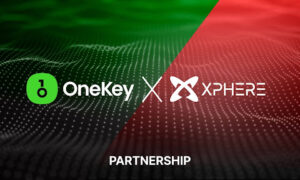In this article, we will discuss what a TLD is and examine the key differences between the most popular TLDs.While a Top Level Domain is important for setting the tone of a website, it is not the only factor that determines a website’s identity. The website’s content, design, and overall user experience also play a role in shaping its identity. However, the TLD is often the first thing users see when they visit a website, so it is important to choose wisely.
There are over 1,000 TLDs to choose from, but the most popular ones are “.com,” “.net,” “.org,” and “.info.” Each TLD has its specific purpose, so it’s important to choose the one that best suits the needs of your website.
- .com:
The “.com” TLD is the most popular and versatile TLD available. It can be used for nearly any business, personal, or nonprofit website. This TLD is also the most expensive and competitive, so choosing a .com that is relevant and memorable is important.
- .net:
The “.net” TLD is typically used for technology-related websites or the internet. This TLD is a good choice for websites that offer online services or sell technology products.
- .org:
The “.org” TLD is typically used for websites run by organizations or nonprofits. This TLD can help to establish your website as a trusted source of information.
- .info:
The “.info” TLD is a good choice for websites that offer much information, such as news sites or online databases. This TLD is also less expensive and competitive than .com, so it may be a good option if you’re on a budget.
- .pk:
The “.pk” TLD is used for websites associated with Pakistan. This TLD can help users to identify your website as being Pakistan-related, which can be useful if your target audience is in that country. The .pk domain is also less expensive than others, so it may be a good option if you’re on a budget, and it can be registered for at least 2 years.
- .us
The “.us” TLD is used for websites associated with the USA. This TLD can help users to identify your website as being USA-related,
- .uk
The “.uk” TLD is used for websites associated with the United kingdom. This TLD can help users to identify your website as being UK-related,
No matter which TLD you choose, it’s important to make sure that it reflects the personality and purpose of your website. A well-chosen TLD can help your website stand out from the crowd and attract the right attention. While a Top Level Domain is important for setting the tone of a website, it is not the only factor that determines a website’s identity.
Generic top-level domain:
There are two main TLD types, gTLDs are the most common and include popular extensions like “.com,” “.net,” and “.org.” These extensions are intended for general use and can be registered by anyone, regardless of location.
Country code top-level domain:
ccTLDs are extensions that are specific to a particular country or territory. For example, “.uk” is the TLD for the United Kingdom, “.pk” is the TLD for Pakistan, and “.cn” is the TLD for China. These extensions are intended for organizations and individuals based in the country or territory they represent.
Difference between gTLDs and ccTLDs:
One important difference between gTLDs and ccTLDs is that ccTLDs are often subject to additional regulations and requirements. For example, registering a .pk domain may require that you have a registered business in Pakistan or provide additional information to the registry. Like the .uk, .us, and .cn domains, they required business in their country.
Another important difference is the way the audience perceives them. gTLDs such as .com, .net, and .org are considered more generic and global. They are commonly used by multinational companies, while ccTLDs like .pk for Pakistan, .fr for France, or .de for Germany are considered more local and are commonly used by local companies.
In addition, using a ccTLD can also help with search engine optimization (SEO) by indicating to search engines that your website is relevant to a specific country or region.
In conclusion, top-level domains play an important role in the organization of the internet and are a key component of any website’s address. Understanding the difference between gTLDs and ccTLDs is essential for anyone looking to register a new domain name, as it can impact your website’s SEO, audience, and legal requirements.



































